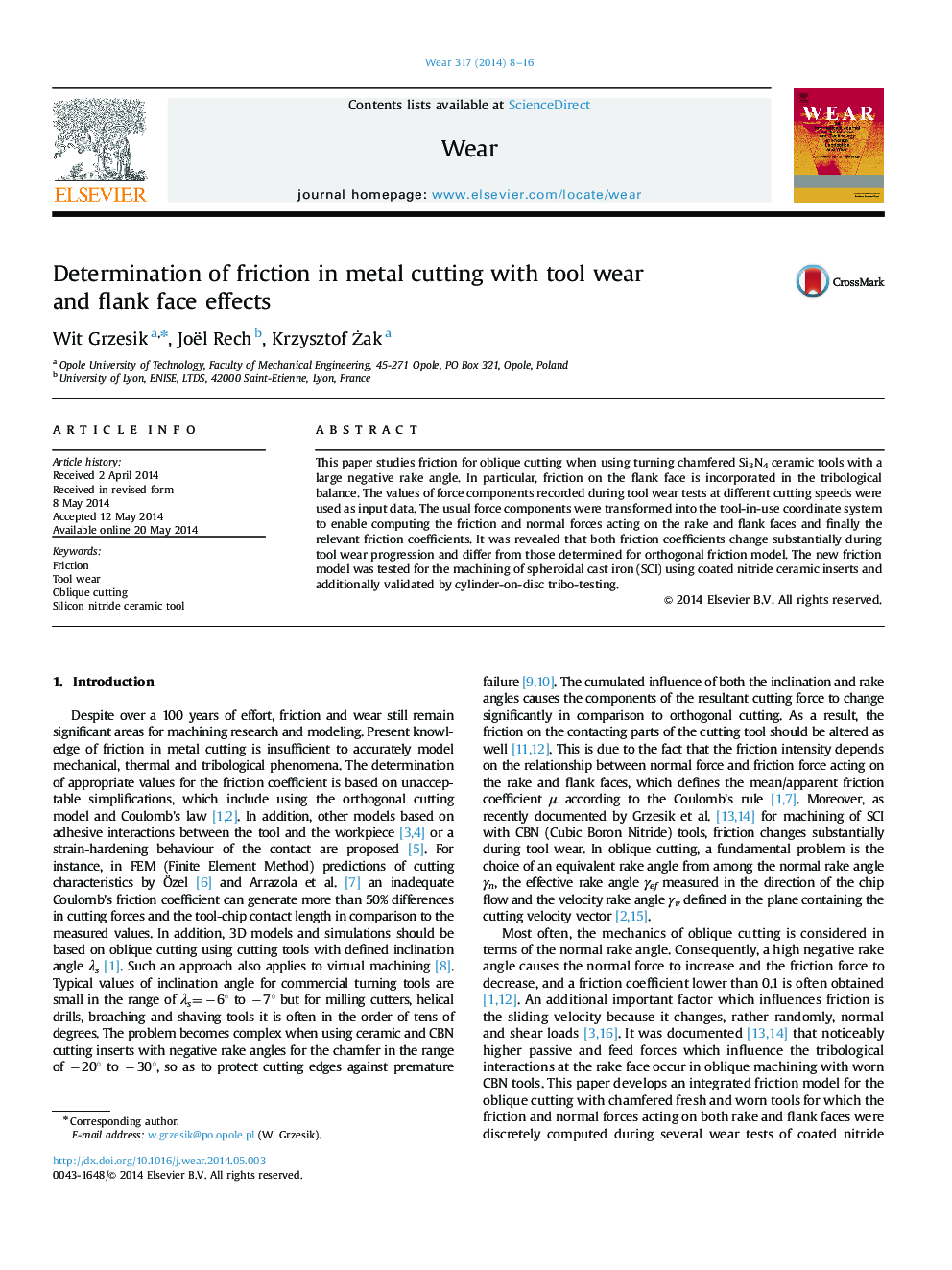| Article ID | Journal | Published Year | Pages | File Type |
|---|---|---|---|---|
| 617268 | Wear | 2014 | 9 Pages |
•Force distributions on the rake and flank faces are drawn.•Changes of forces due to tool wear are presented.•Friction coefficients for rake and flank faces are determined.•Cylinder-on-disc tribo-tests are performed.•Tool wear distinctly changes friction.
This paper studies friction for oblique cutting when using turning chamfered Si3N4 ceramic tools with a large negative rake angle. In particular, friction on the flank face is incorporated in the tribological balance. The values of force components recorded during tool wear tests at different cutting speeds were used as input data. The usual force components were transformed into the tool-in-use coordinate system to enable computing the friction and normal forces acting on the rake and flank faces and finally the relevant friction coefficients. It was revealed that both friction coefficients change substantially during tool wear progression and differ from those determined for orthogonal friction model. The new friction model was tested for the machining of spheroidal cast iron (SCI) using coated nitride ceramic inserts and additionally validated by cylinder-on-disc tribo-testing.
